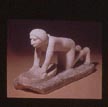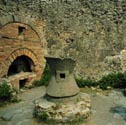TheThe Staff of Life
 |
 |
Where do the ingredients
in bread come from?
Bread is called the "staff of life" because it is a very basic food that supports life. The world of bread is vast and varied: some form of bread is found in virtually every society.
The breads most common in the United States - sliced white and whole wheat, rolls in various shapes and sizes, Italian and French bread, bagels and rye bread - are all leavened or raised breads which means the dough rises during its preparation. As a result, these breads are thick, have a crust that can be crunchy, and a middle that is soft and spongy.
 |
 |
 |
|
In many parts of the world the most common breads are flat: the tortilla in Mexico and other countries in Latin America, lavash from central Asia, pappadum and chapatti from India. Another flatbread with Biblical roots is matzoh, still eaten in Jewish communities during the holiday of Passover, the "Feast of Unleavened Bread."
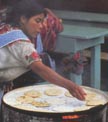 |
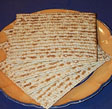 |
| This
photo of a Guatemalan woman making tortillas appears in Karin Badt's
wonderful book, Pass the Bread. |
|
"Stale bread is not hard; what is hard is to live without bread." Paul Claudel (1868-1955) French poet
Author Jonathan Swift and Bible commentator Mathew Henry both used the expression "the staff of life" in relation to bread back in the late 17th century.

This famous picture by Wally Ronis is called The Little Parisian Boy.
The boy is carrying a baguette - the bread that has become instantly
recognizable as French.
![]()
"If
you ask a hungry man how much is
2 + 2, he replies 4 loaves."
Hindu Proverb
Where does bread come from?
The essential
ingredients for bread are quite simple: for flatbread, flour, water and
salt are combined into dough and then baked in an oven or simply cooked
over a stove as in the case of tortillas.
Leavened breads require an additional ingredient - yeast or other leavening
agent which makes the
dough rise; these breads usually require an additional step in the mixing
of the dough called 'kneading' which makes the dough elastic. Leavened
breads are then baked in an oven.
We can now better understand how our bread is
created: it is produced through a process in which ingredients are mixed,
the dough (for yeasted breads) goes through changes and rises as a result,
the loaves are then shaped and finally baked.
![]()
![]()
![]()
![]()
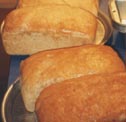
By combining a few basic ingredients and following some simple steps you can make wonderfully tasty bread in your own home! Go to Breadmaking for further directions.





